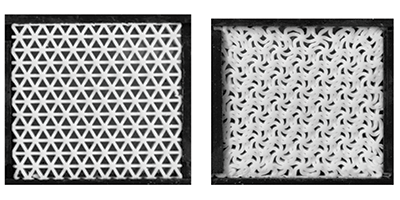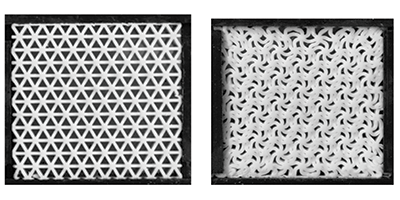Geometrical Frustration Takes a Stretch
Geometrical frustration occurs when a system of interacting particles is unable to find its lowest energy state because of how the particles are arranged. This property plays an important role at microscopic scales in solids, and in particular, magnets, where the absence of a single, lowest-energy state can, for example, affect a material’s conductivity.
Katia Bertoldi and her colleagues at Harvard University have now investigated geometrical frustration on a macroscopic scale. The researchers designed a lattice of triangular tiles with sides made from -millimeter-long silicone rubber beams. The lattices were prepared such that the angle between the beams at each vertex, or “joint,” was the same and each joint experienced the same mechanical stress. Frustration resulted when the researchers compressed the lattice, since there was no way for all of the beams to simultaneously buckle and still preserve equal angles at each joint.
Bertoldi and her colleagues observed that the ratio of the thickness of the beams to their length—the material’s porosity—controlled the geometry of the lattice as they applied an equal compressive force along the lattice’s perimeter. As reported in Physical Review Letters, the team found that highly porous structures preferentially formed ordered chiral patterns when compressed, while denser structures tended to exhibit ordered symmetrical patterns. The appearance of complex, ordered patterns is surprising, given that previous studies of frustrated systems show that they tend to be disordered. These results suggest that, contrary to what was previously thought, ordered structures can arise in frustrated systems without the addition of defects such as dopants. – Katherine Kornei





